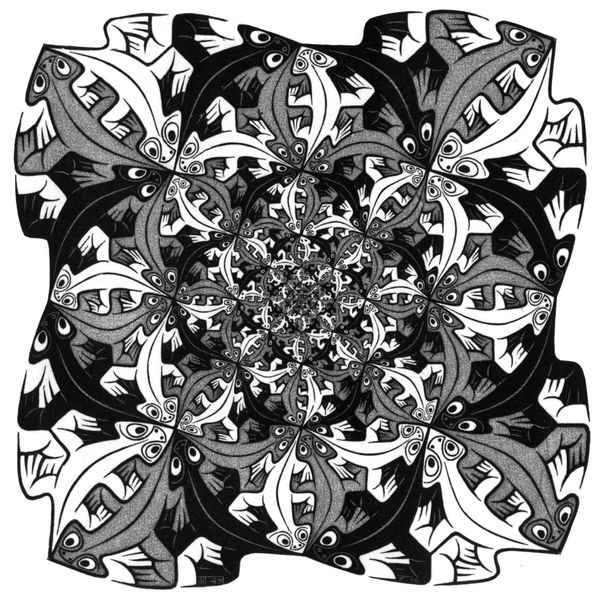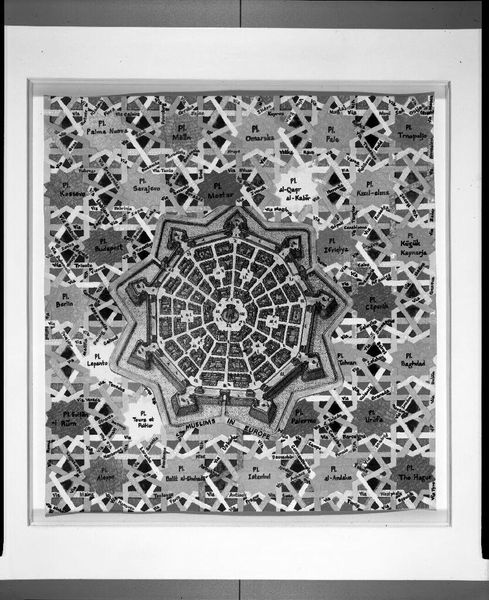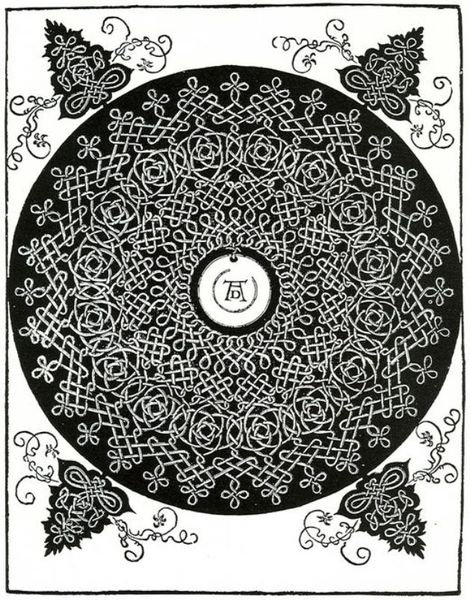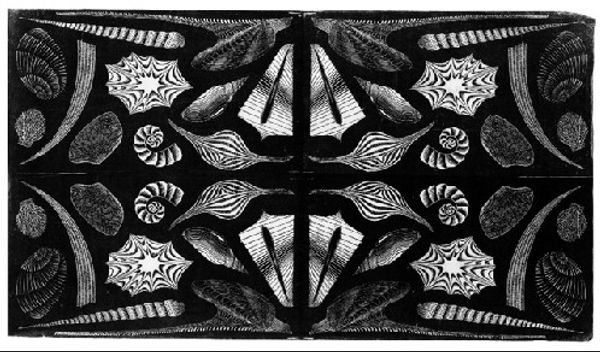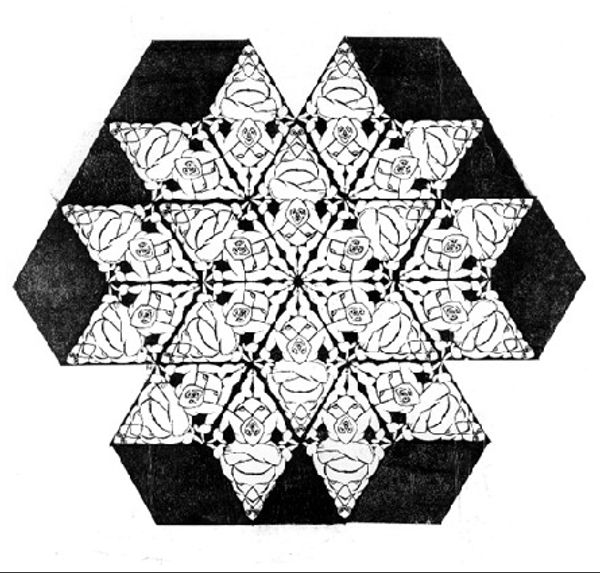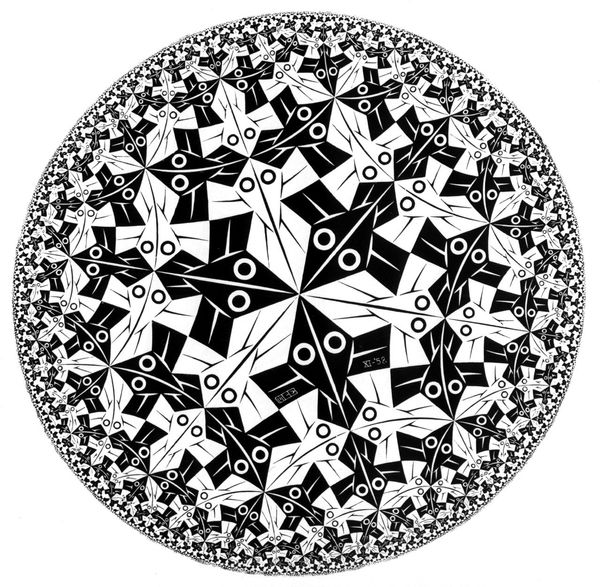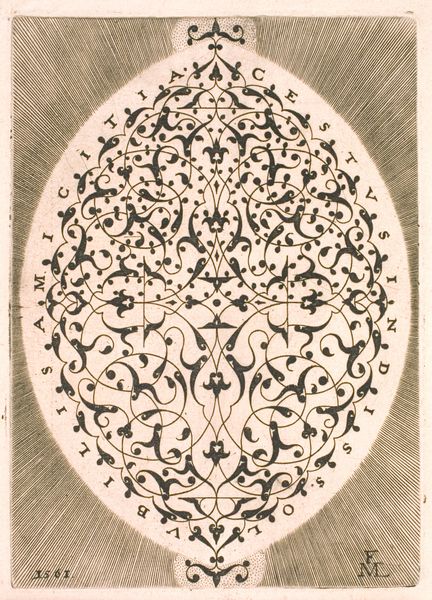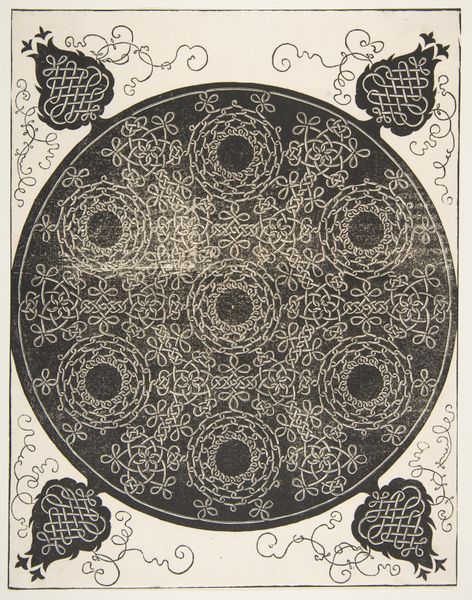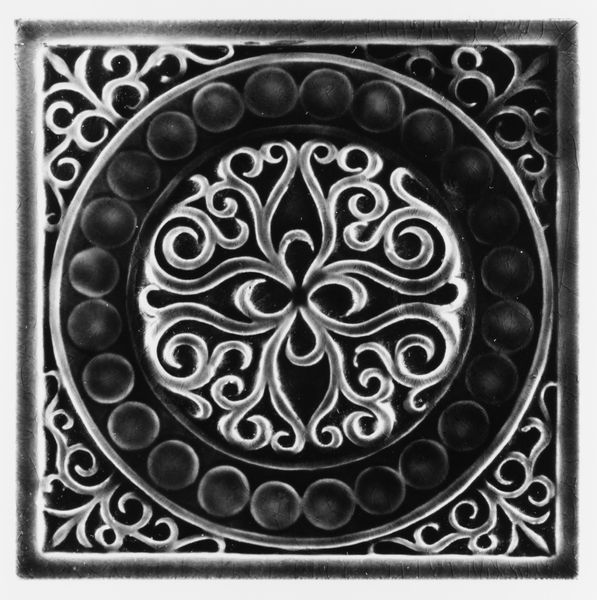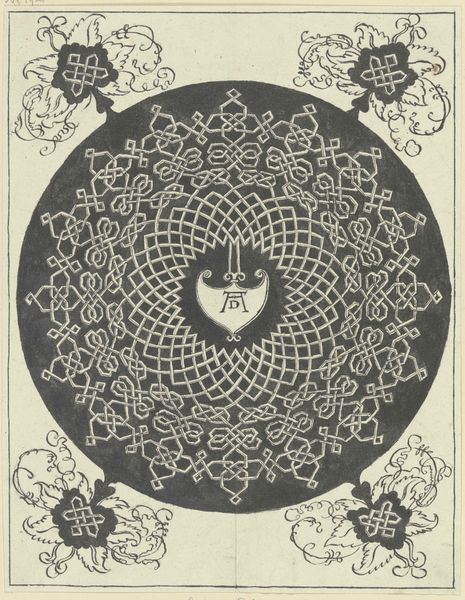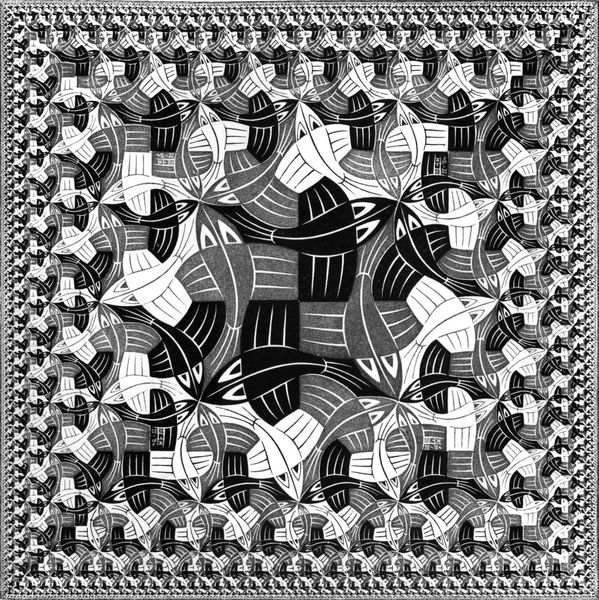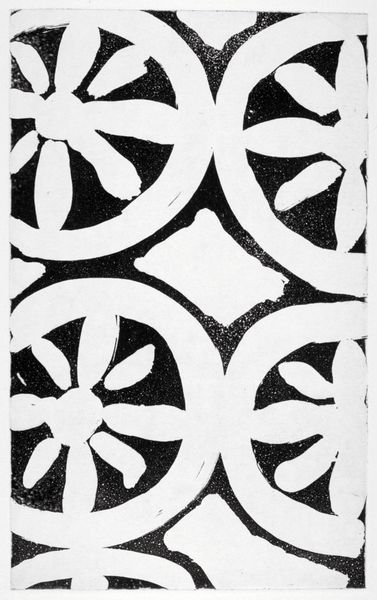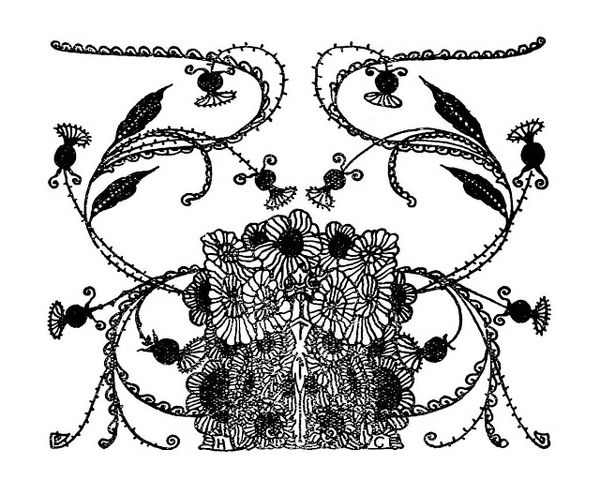
graphic-art, print
#
graphic-art
#
animal
# print
#
pattern
#
geometric
#
surrealism
#
monochrome
Copyright: M.C. Escher,Fair Use
Editor: Here we have M.C. Escher's "Circle Limit IV," created in 1960 using graphic art techniques, mainly prints. It is so striking! The monochrome patterns create an almost dizzying effect, but also a kind of harmony. What can you tell me about how to interpret it? Curator: Escher's work is a fascinating exploration of mathematical concepts through art. It’s not just geometry; it's a commentary on systems and boundaries. Look at the fish, or are they bats, perhaps angels… they become smaller as they approach the edge of the circle. Editor: They morph together... Curator: Exactly. What does it suggest about how we perceive the “other”? These repeated shapes play with perspective. It forces us to question the center, the periphery, and our position in relation to them. This piece interrogates perspective through an engagement with gender and racial difference, in its contrast of angels and devils that make up an imperfect symmetry of belonging. Does that reading resonate with you? Editor: Definitely. So it’s like Escher is using math and these shifting forms to make us think about how society organizes itself, and how we create these categories that shrink or enlarge based on where they are positioned in society... Wow. Curator: Precisely. He turns cold logic into a mirror reflecting our own social constructions. He wasn't merely making a pretty picture, but engaging in a conversation about our world. Editor: I will never look at Escher the same way again. This piece shows how art and social justice can work together to make a real statement. Curator: And hopefully inspire others to question and reshape the circle.
Comments
No comments
Be the first to comment and join the conversation on the ultimate creative platform.

